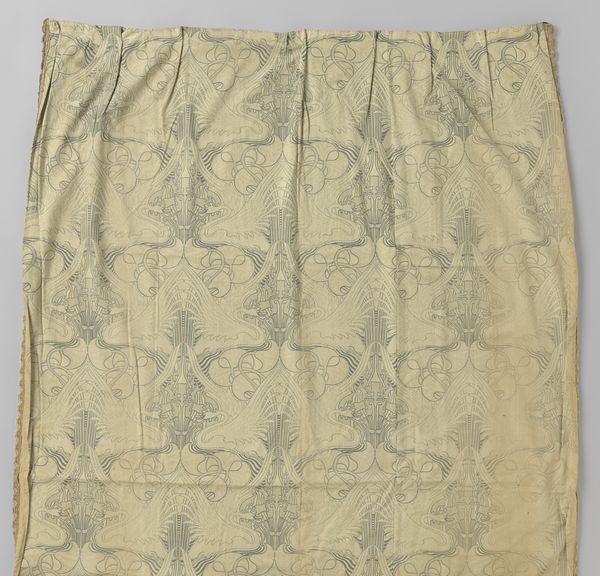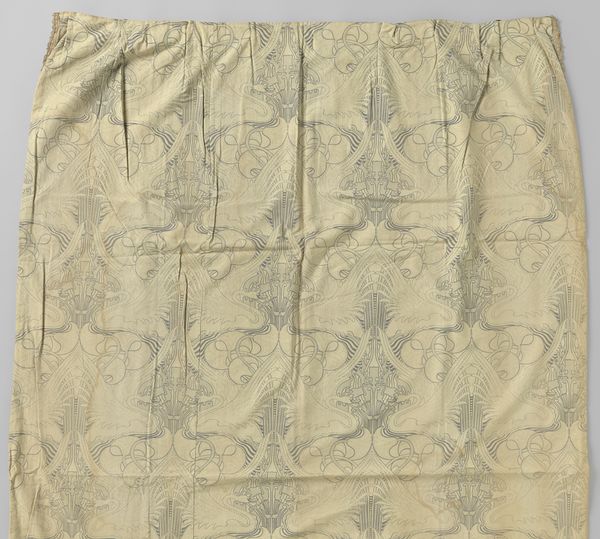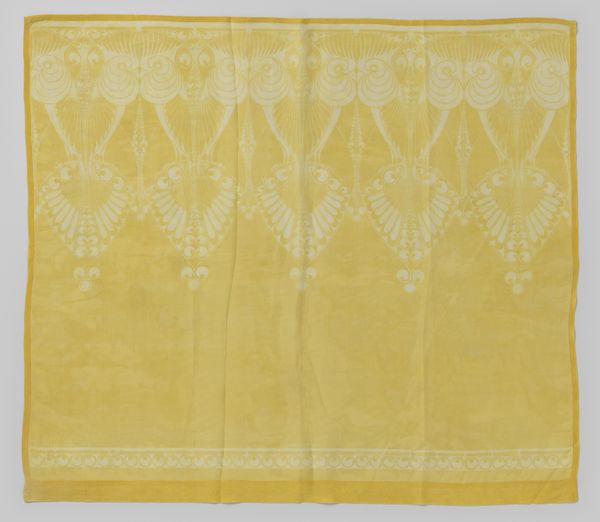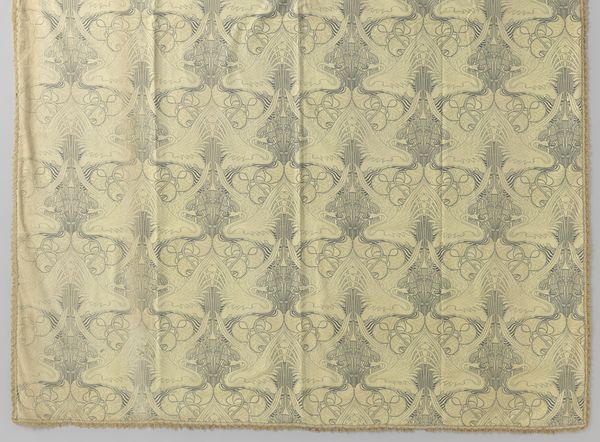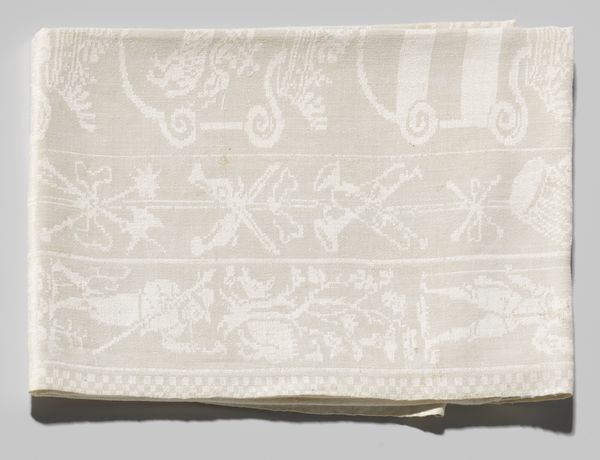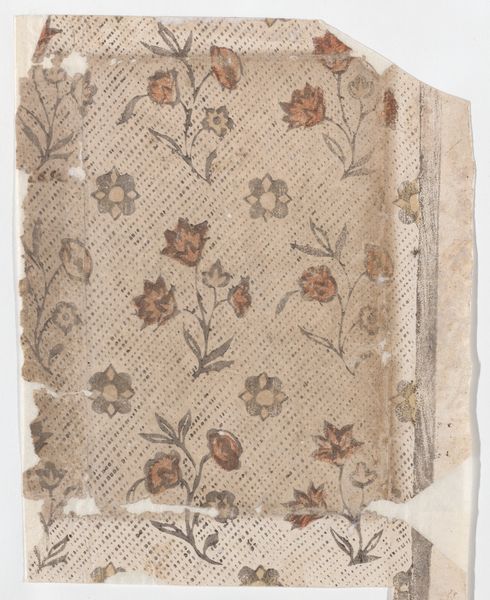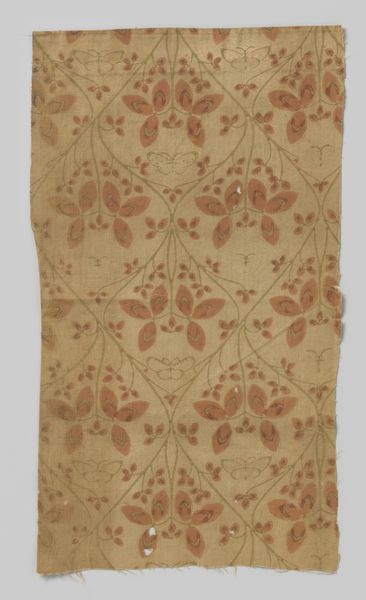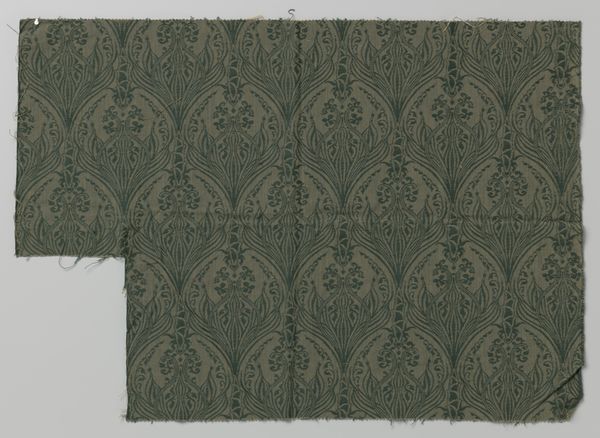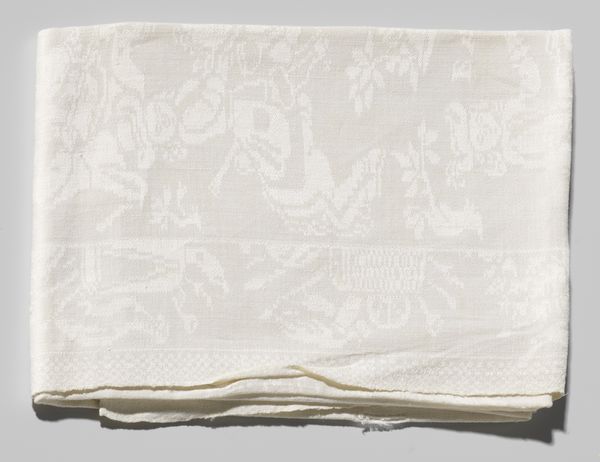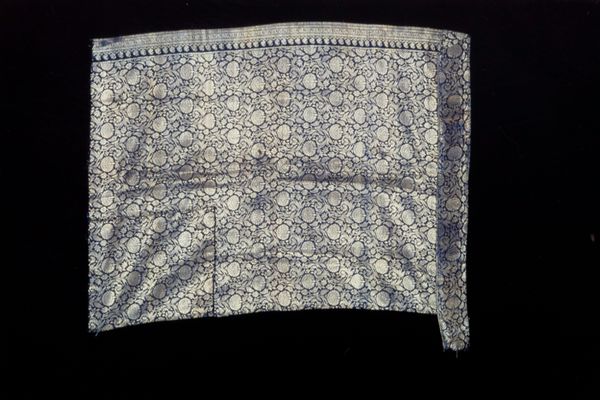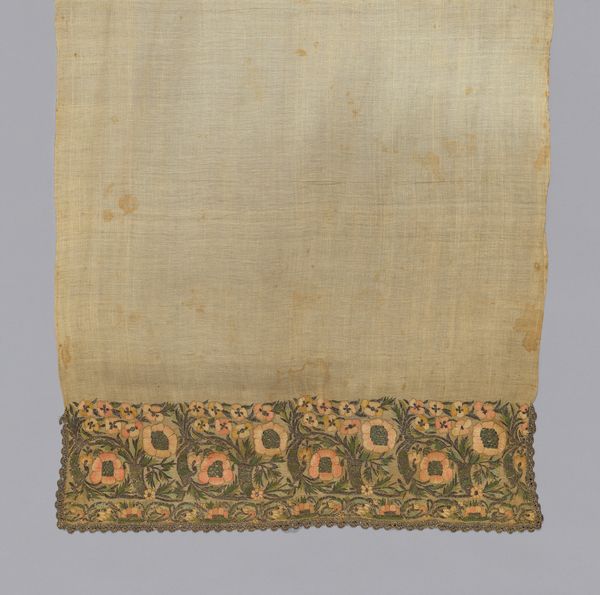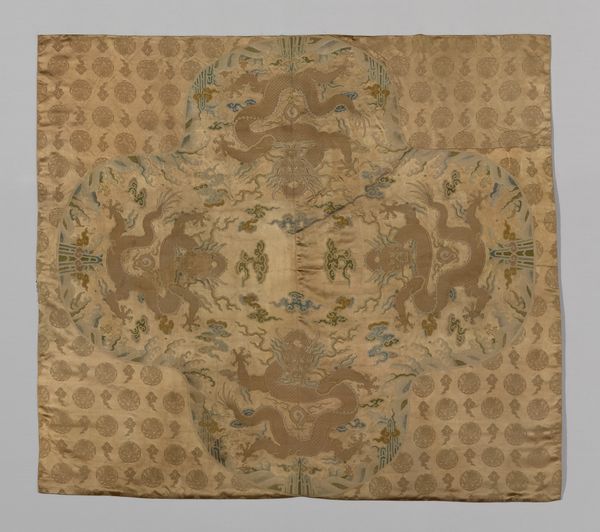
silk, weaving, textile
#
art-nouveau
#
silk
#
weaving
#
textile
#
geometric
#
fabric design
#
textile design
#
decorative-art
#
imprinted textile
Dimensions: height 195.0 cm, width 120.0 cm
Copyright: Rijks Museum: Open Domain
Curator: This textile, dating to around 1900, is titled "Overgordijn van bedrukte cretonne met zwanen en lissen"—or, translated, a curtain of printed cretonne featuring swans and irises. It resides here at the Rijksmuseum. Editor: It's incredibly calming. The repetitive pattern is so subtle and soothing, like gazing into a still pond at dawn. It breathes elegance but in a muted, almost melancholic way. Curator: I'm fascinated by the enduring symbolism. The swan, often linked to purity, grace, and love, is paired with the iris, embodying faith, hope, and wisdom. It seems almost an invitation into a serene dream space. Editor: What about the cretonne itself, this imprinted textile? We're talking about a mass-produced fabric meant for everyday use, elevated through Art Nouveau design. I wonder who the laborers were, creating this for what was likely an elite market. Were these women or men? And how skilled were they? Curator: The imagery itself echoes cycles of nature: birth, life, death, and rebirth—perhaps the subconscious appeal relates to its familiarity and timelessness. The symbolism transcends socioeconomic boundaries. Editor: Yet, there is a contrast between the handcraft aesthetic the Art Nouveau design attempts to embody and the industrialized production that the term ‘printed cretonne’ speaks to. It shows the tensions between the aesthetics and material reality of its moment. What stories might it conceal about manufacturing and labor practices in textile mills around 1900? Curator: The stylized patterns themselves almost become like coded messages—perhaps a reflection of a particular cultural moment—or even an encoded invitation into an imagined landscape of reflection and introspection. Editor: Right, but even that idea of interiority is bound to the socioeconomic space in which one dwells. Was it deployed in homes to shut out industrial grime and allow affluent patrons to escape through material fantasy? It's all deeply connected, even something as seemingly fragile as silk! Curator: This fabric seems to straddle the line between private and public, dreams and reality. A beautiful illustration of art becoming interwoven with life itself. Editor: Precisely, an art inextricably connected to industry, revealing to us not only beauty but the means by which that beauty came into being, however concealed by history.
Comments
No comments
Be the first to comment and join the conversation on the ultimate creative platform.
